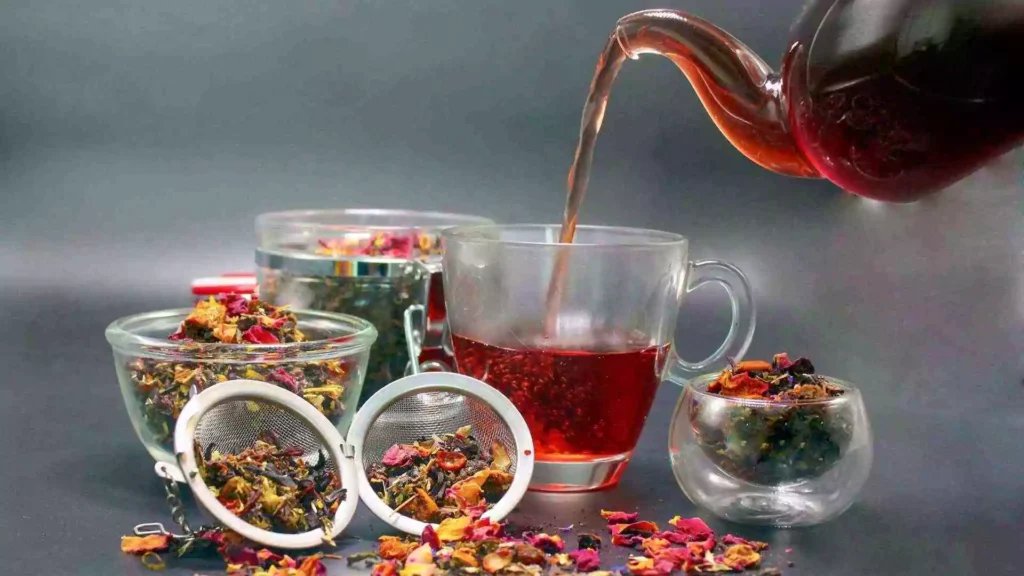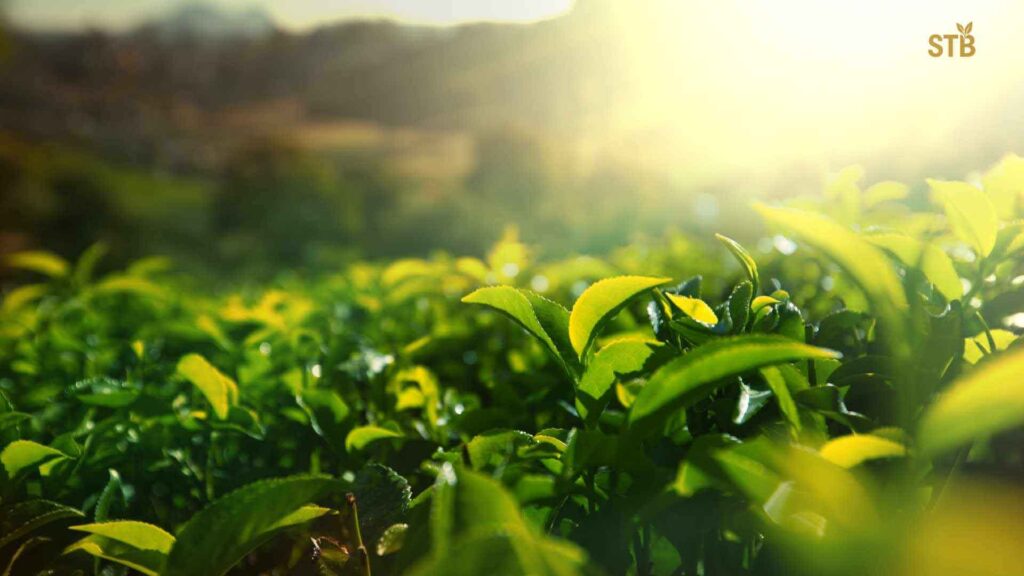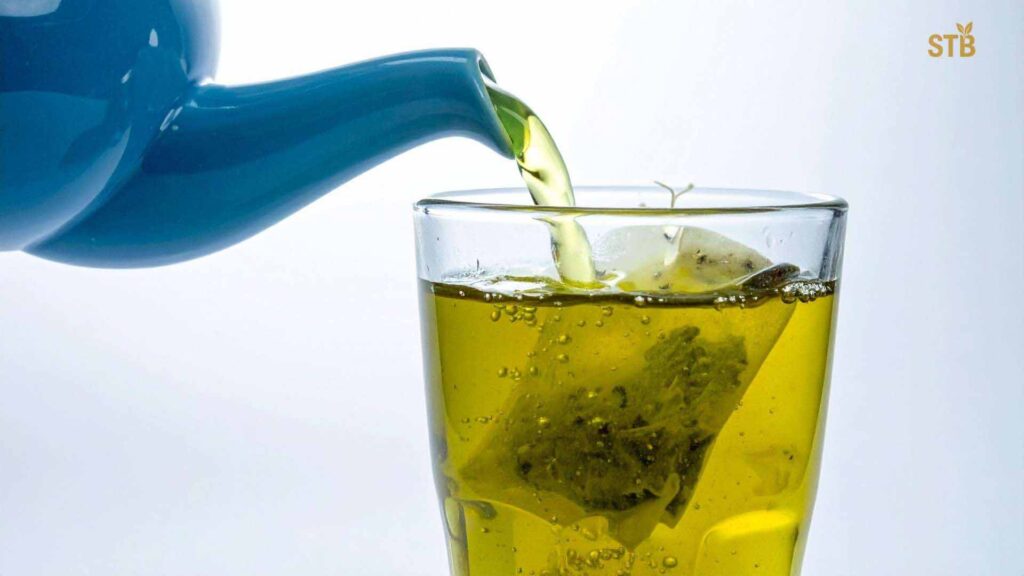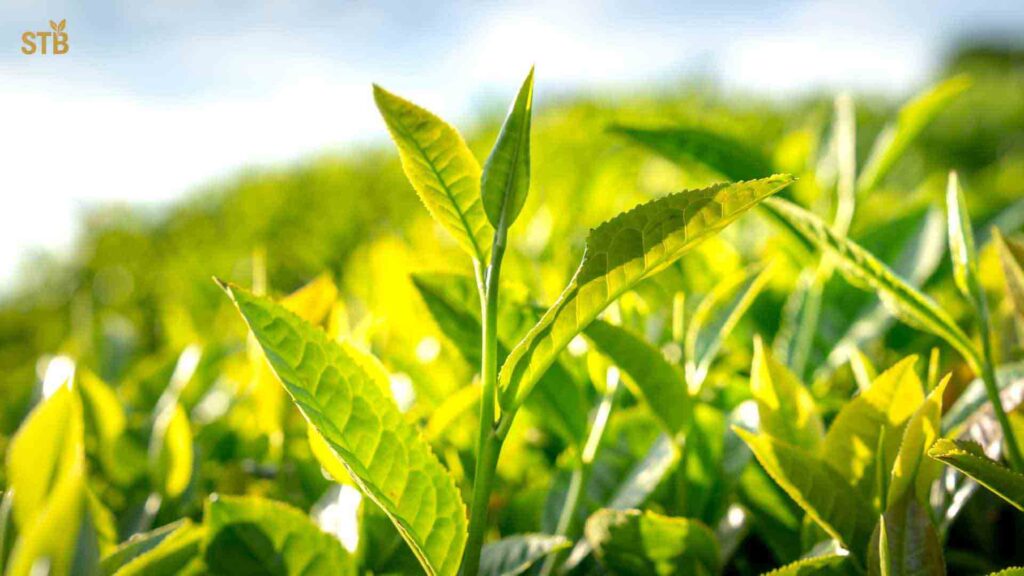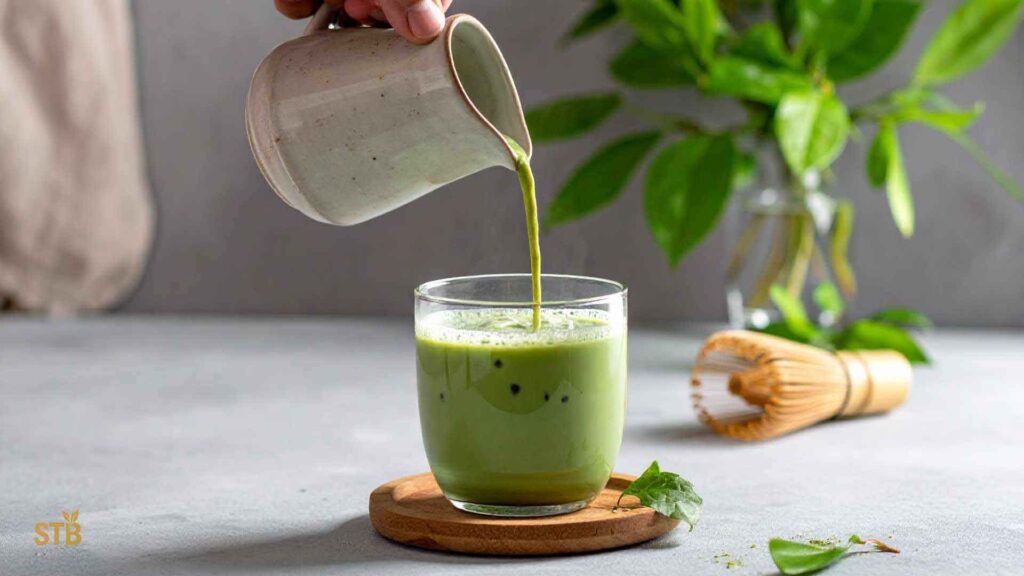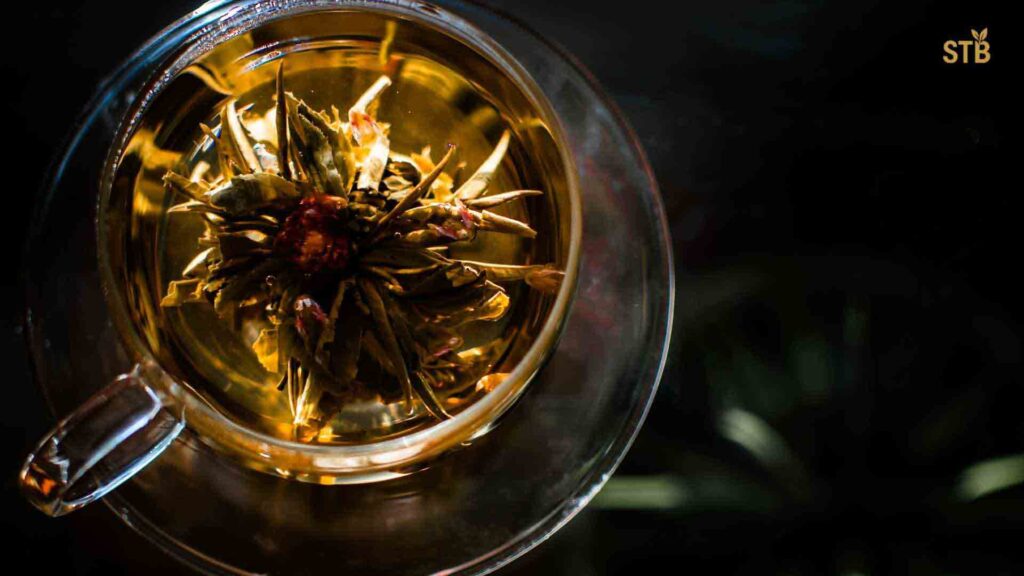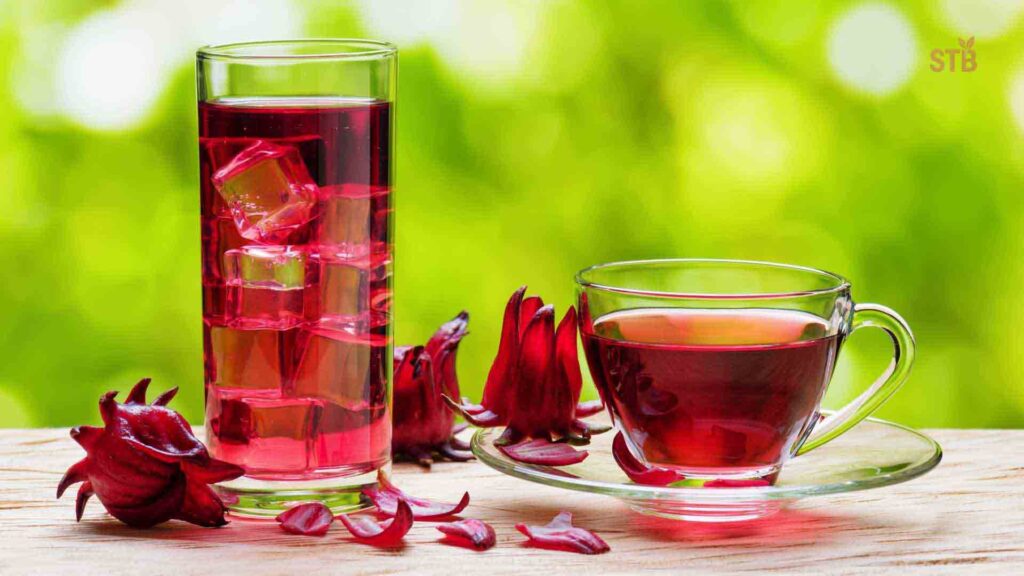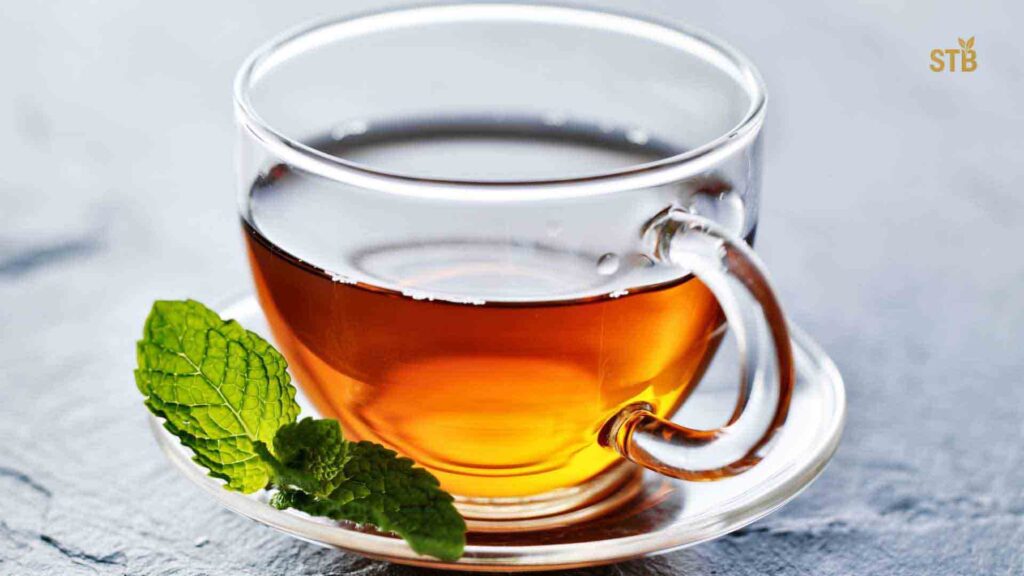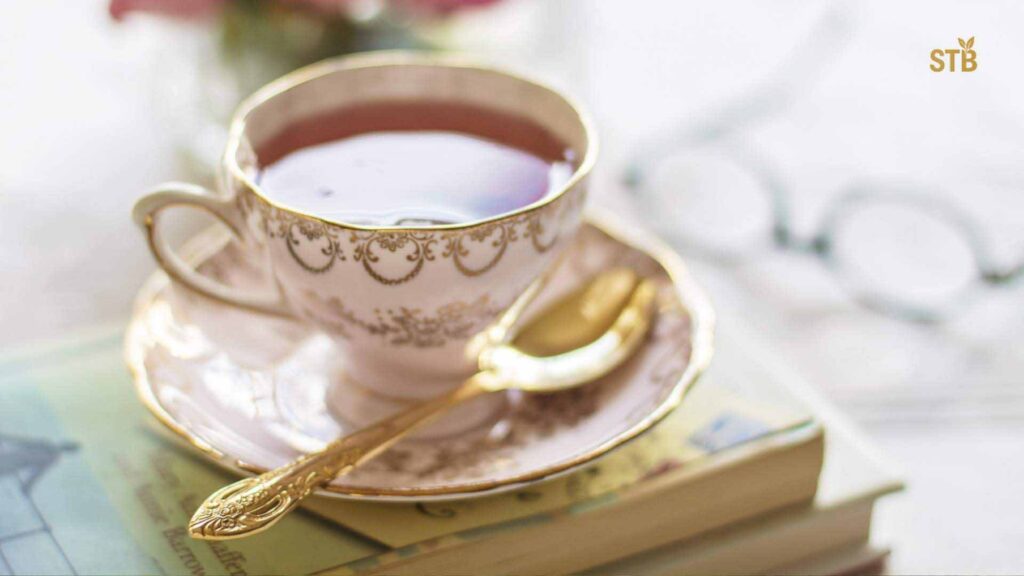Tea is more than just a drink; it’s a global phenomenon. It’s the second most consumed beverage worldwide, right after water. With a rich history spanning thousands of years, tea has become a staple in many cultures. There are many types of tea, each with unique flavors and health benefits. From green to black, white to oolong, the variety is vast. Each type of tea offers its own set of health benefits. Some teas are rich in antioxidants, while others aid in digestion or relaxation.
Tea can be a soothing ritual, a social activity, or a health boost. It’s versatile and can be enjoyed hot or cold.Whether you’re a tea enthusiast or a curious newcomer, there’s always something new to discover. In this article, we’ll explore the different types of tea and their health benefits.Join us on this journey to uncover the wonders of tea.
What Is Tea? A Brief History and Overview
Tea originates from the Camellia sinensis plant and has been enjoyed for thousands of years. Its history began in ancient China, where it was discovered as a medicinal beverage. Over time, it evolved into a cultural staple across the globe. Through exploration and trade, tea spread to Japan, Europe, and beyond. This expansion led to diverse tea preparation methods and a variety of tea cultures. Each region developed its unique traditions and preferences, creating a global tapestry of tea consumption.
Tea can be classified into several types based on processing:
- Green Tea: Non-oxidized, retains its green color.
- Black Tea: Fully oxidized, known for its dark color.
- White Tea: Minimally processed, light and delicate.
- Oolong Tea: Partially oxidized, a balance between green and black.
- Yellow Tea: Lightly oxidized, rare and expensive.
- Pu-erh Tea: Fermented, with a rich flavor profile.
Tea’s long journey from ancient China to modern times highlights its lasting appeal and health benefits.
The Six Main Types of Tea
Tea offers a diverse array of flavors and health benefits. The six main types cater to many tastes and preferences. Each type varies in processing and oxidation, giving them unique characteristics.
Below are the primary types of tea:
- Green Tea
- Black Tea
- White Tea
- Oolong Tea
- Yellow Tea
- Pu-erh Tea
These teas form the foundation of tea culture worldwide, each offering specific health benefits. Let’s explore them in more detail to understand what makes each type distinct.
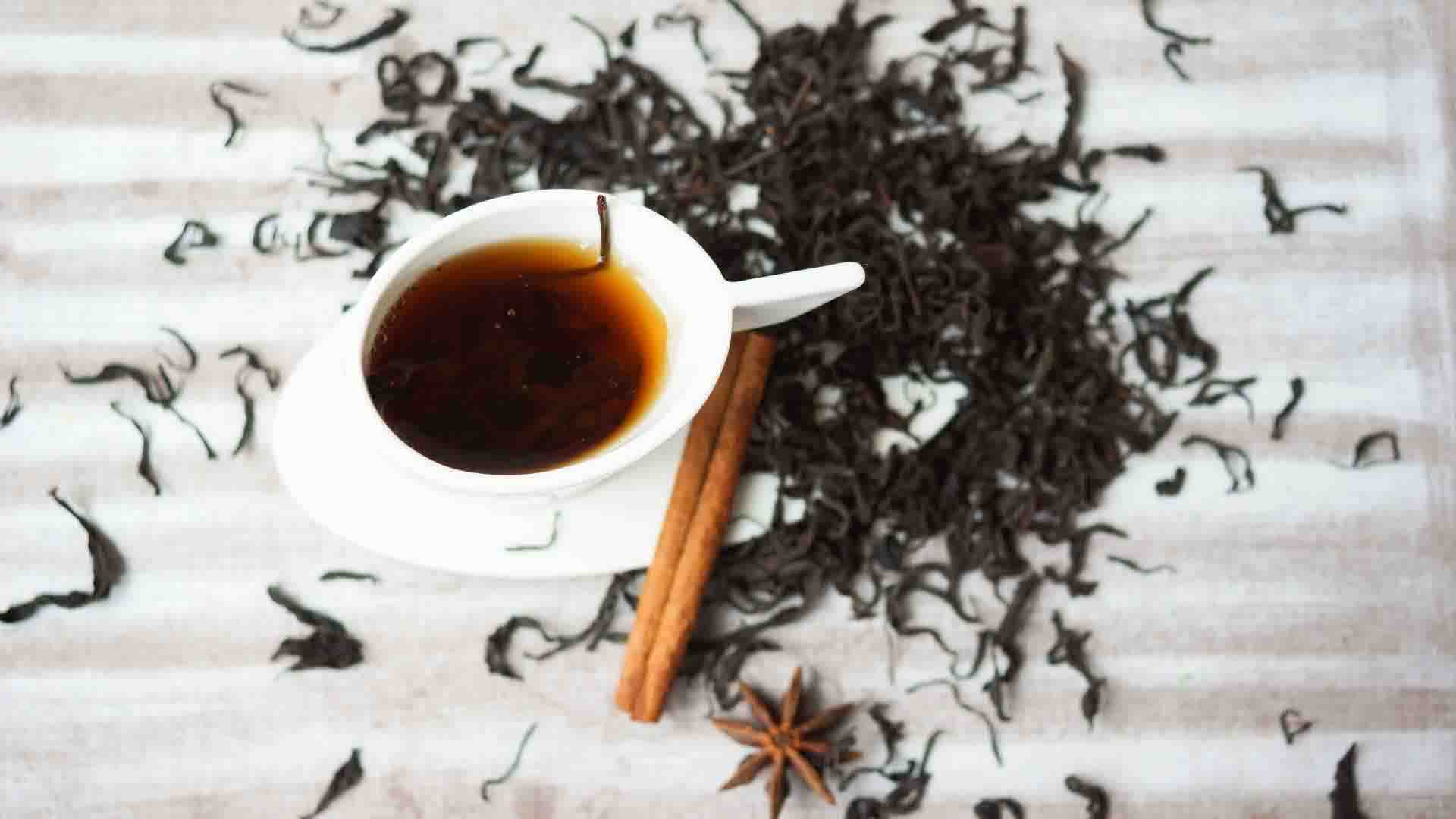
Black Tea: Benefits and Uses
Black tea is the most widely consumed tea in the world. It contains unique antioxidants called theaflavins and thearubigins (polyphenols), giving it a bold flavor and dark color. Regular black tea drinking has been linked to many benefits:
- Rich in antioxidants. Black tea is “packed with flavonoids” – plant antioxidants that neutralize free radicals. These antioxidants help reduce inflammation and protect cells from damage.
- Heart and circulatory health. Studies show black tea can improve heart health by lowering LDL cholesterol and blood pressure. For example, theaflavins in black tea may reduce cholesterol absorption, and people who drink a few cups daily tend to have a lower risk of heart disease and stroke.
- Stroke prevention. Drinking 2–3 cups of black tea per day has been associated with a reduced risk of stroke. The flavanols in black tea help keep blood vessels flexible, improving circulation.
- Energy and focus. With about 47 mg of caffeine per 8-oz cup, black tea provides a mild energy boost. It also contains an amino acid (L-theanine) that promotes alert calmness. This combination can improve mental focus without the jittery effects of coffee.
- Digestive and immune support. Some people find warm black tea soothing for digestion. Its antioxidants also support a healthy immune system. (Note: very hot tea can irritate the throat; let it cool slightly.)
Overall, regular black tea drinkers often experience improved heart markers and longevity. Experts recommend about 2–3 cups of tea daily for health benefits. Watch extra additives: high sugar or milk can dilute tea’s antioxidant power.
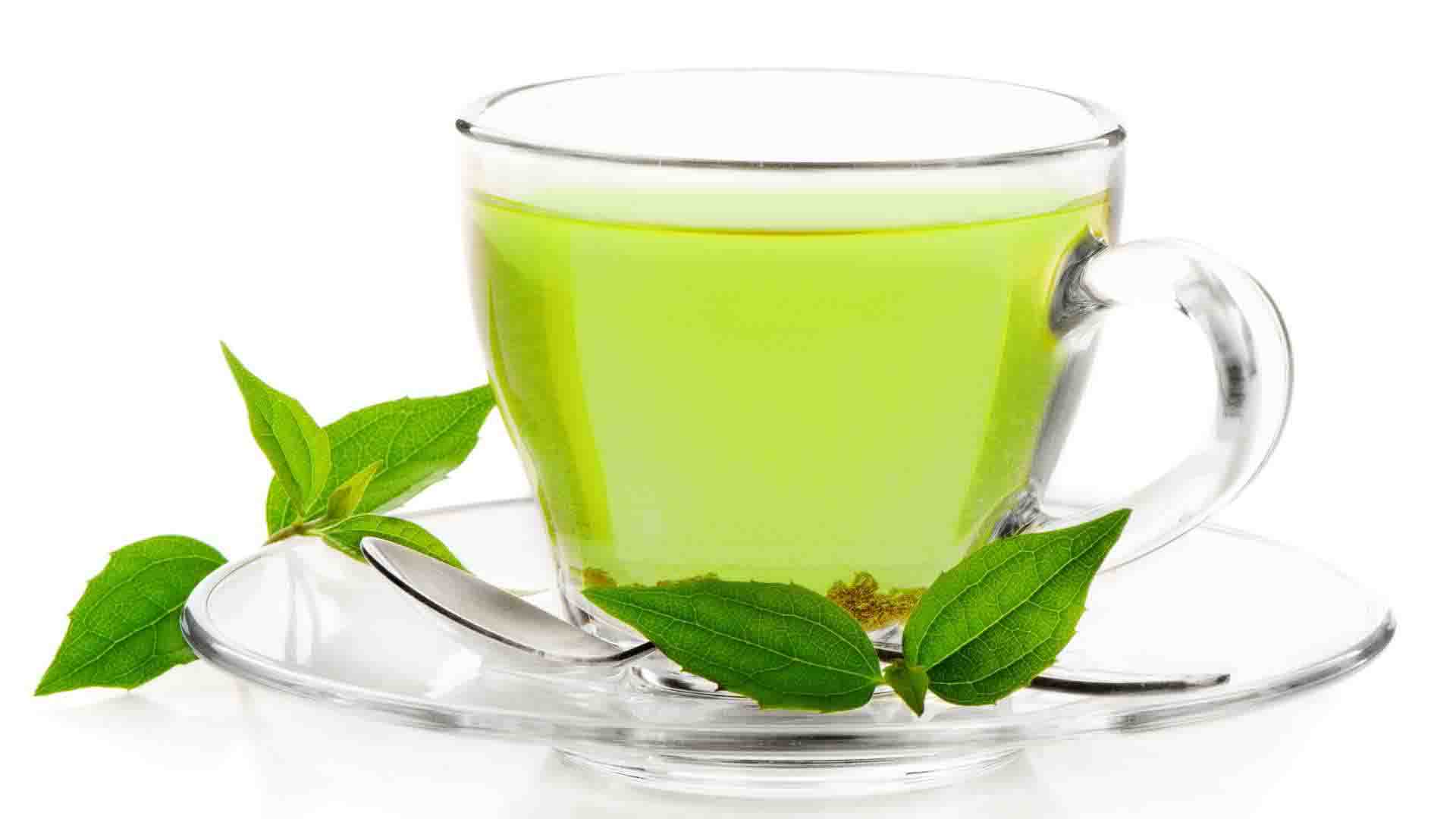
Green Tea: Benefits and Uses
Green tea is prized worldwide for its mild flavor and health-promoting compounds. Because green tea leaves are steamed or pan-fired soon after picking, they retain high levels of catechins – powerful antioxidants like epigallocatechin gallate (EGCG). These compounds give green tea its signature benefits:
- High in catechins (antioxidants). Catechins in green tea help fight inflammation and protect cells. Green tea’s EGCG is especially potent at reducing oxidative stress.
- Heart and stroke protection. Green tea has been shown to lower LDL (“bad”) cholesterol and blood pressure. People who drink 2–4 cups daily see significant drops in stroke risk and heart disease over time. The flavonoids in green tea also help relax blood vessels, improving circulation.
- Brain health. Green tea contains caffeine and L-theanine, which boost brain function without overstimulation. Studies found that frequent green tea drinkers have a much lower risk of cognitive decline and memory loss. EGCG and L-theanine may offer protection against Alzheimer’s and dementia.
- Metabolism and weight management. Catechins and a bit of caffeine in green tea can increase metabolism. Some research suggests green tea may help break down fat and aid weight management. (Green tea itself won’t burn fat, but replacing sugary drinks with green tea is a low-calorie habit.)
- Blood sugar and diabetes. Regular green tea consumption helps improve insulin sensitivity. People at risk for diabetes may lower their blood sugar by drinking green tea. In one Japanese study, drinking 4+ cups/day cut death risk from type 2 diabetes complications by 40%.
Green tea’s health profile makes it an excellent everyday drink. It’s naturally low in caffeine (about 25–35 mg per cup) but rich in beneficial compounds. Enjoy it plain or with a squeeze of lemon to enhance antioxidant absorption (and avoid adding sweeteners that can spike blood sugar).
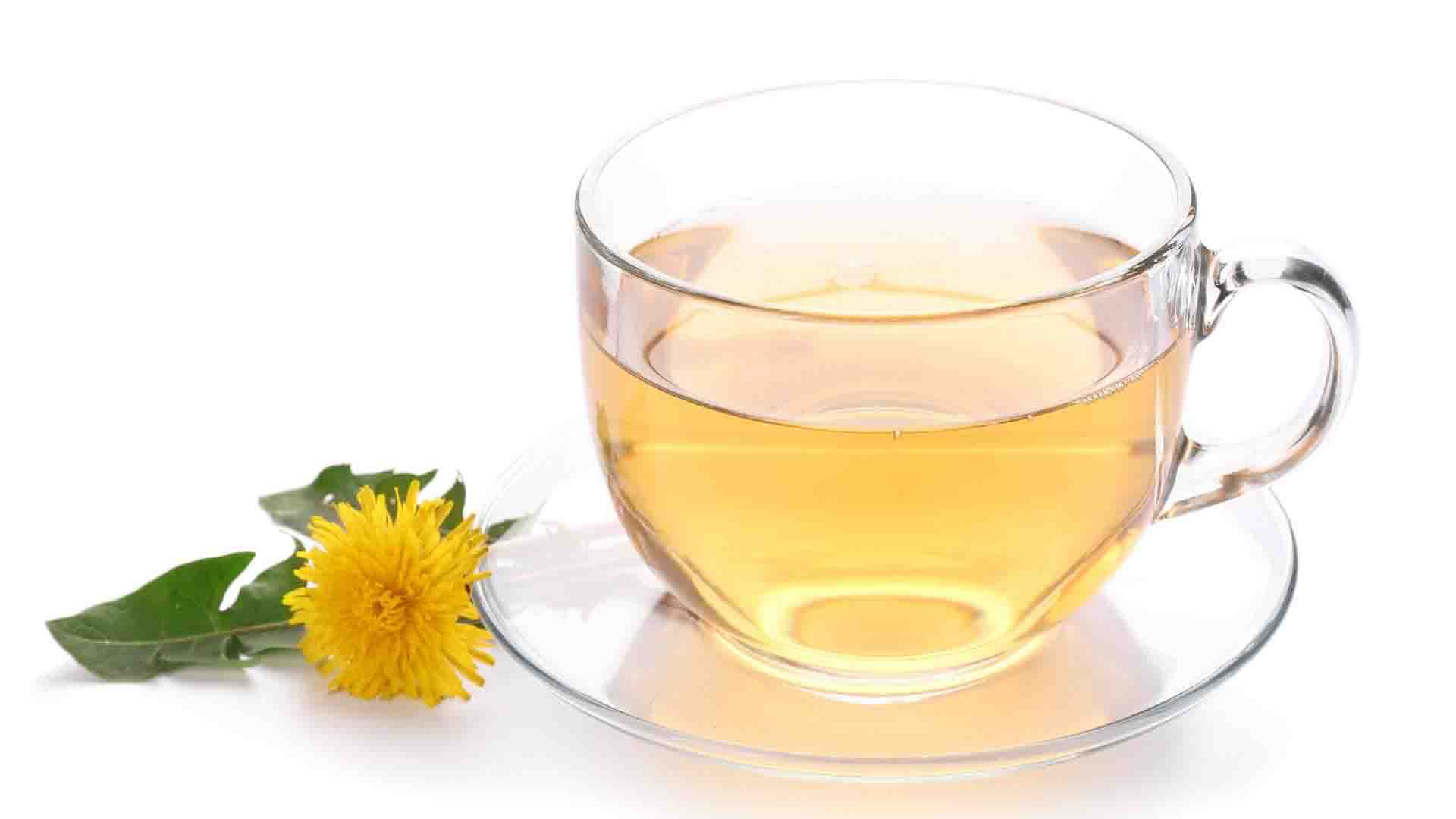
White Tea: Benefits and Uses
White tea is the least processed tea, made from young tea buds and leaves. It has a delicate flavor and even higher levels of antioxidants than green or black tea. Because it’s minimally oxidized, white tea retains many of the same catechins as green tea. Key benefits include:
- Exceptional antioxidant content. White tea is “loaded with polyphenols” like catechins, giving it strong antioxidant power. These antioxidants protect cells from free radicals, reducing chronic inflammation and aging. In fact, some lab tests found that white tea can protect cells against oxidative damage, just as green tea can.
- Heart health support. The polyphenols in white tea can relax blood vessels and prevent LDL cholesterol from oxidizing. An analysis of studies showed people who drank 3+ cups of tea daily had a 21% lower risk of heart disease. While this data isn’t exclusive to white tea, its high antioxidant content suggests it contributes to heart protection.
- Weight management. Like green tea, white tea contains caffeine and EGCG, which may slightly boost fat burning. Research indicates white tea extract can stimulate fat breakdown and may increase metabolism by a few percent. (Again, moderation and a healthy diet/exercise are essential too.)
- Dental health. White tea is rich in fluoride, catechins, and tannins, which can inhibit the bacteria that cause dental plaque. Regular consumption may support tooth health by making enamel more resistant to decay.
- Skin and aging. The antioxidants in white tea help repair skin damage and may slow the aging of skin cells (though more human research is needed on this). Many people value white tea in skincare extracts for this reason.
In short, white tea offers most of the benefits of green tea (anti-inflammatory, heart-protective) with even milder flavor and aroma. Its high antioxidant levels make it one of the healthiest “all types of tea“ you can drink.
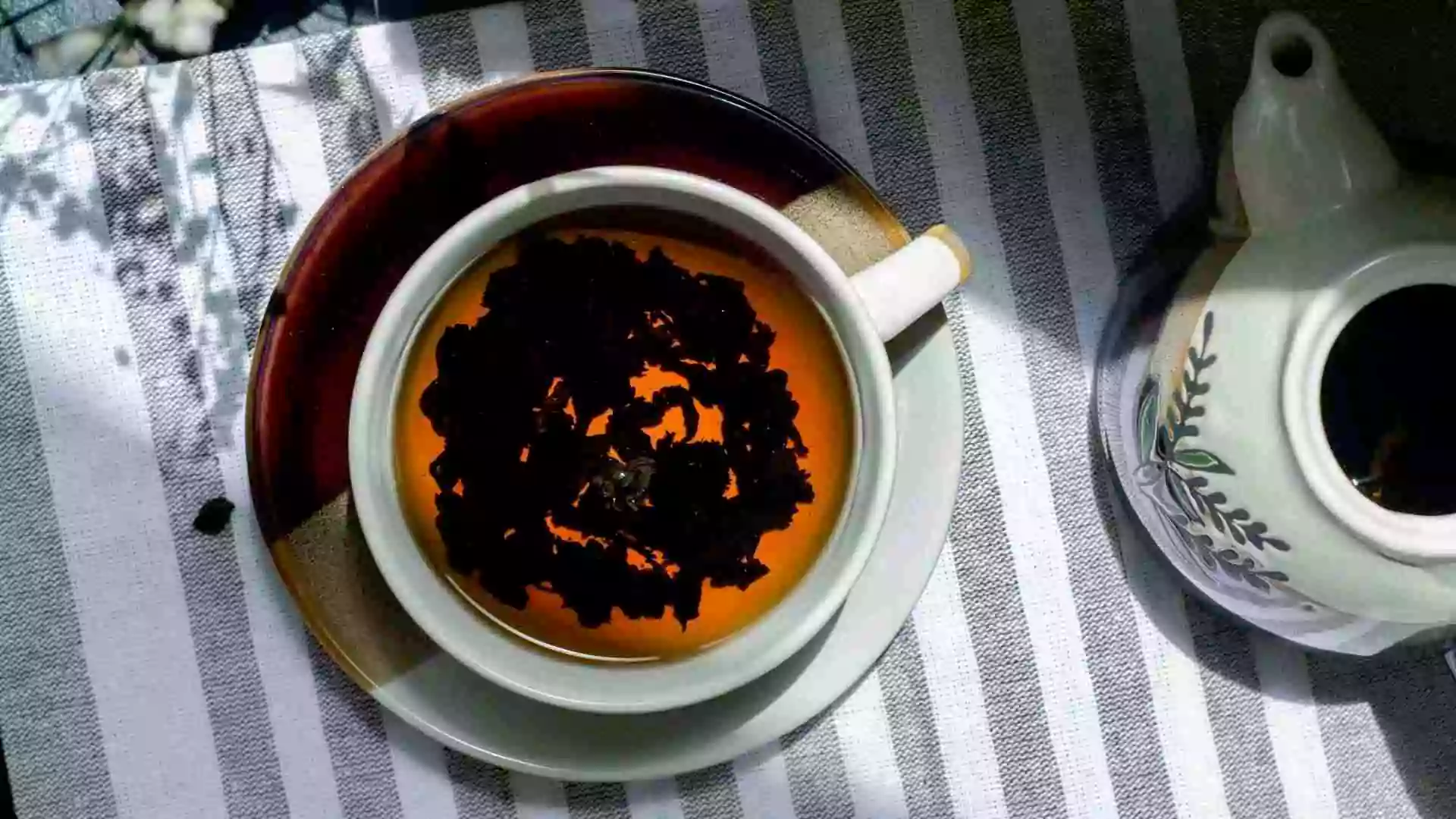
Oolong Tea: Benefits and Uses
Oolong tea is semi-oxidized, offering a flavor profile between green and black tea. This partial oxidation gives oolong its unique taste and character. Known for aiding weight management, oolong tea can boost metabolism and fat breakdown.
The polyphenols in oolong tea may reduce the risk of chronic diseases. Regular consumption can also enhance mental alertness and help control blood sugar levels. Its moderate caffeine content offers a balanced energy boost without jitters.
Benefits of oolong tea include:
- Aids weight management
- Boosts metabolism
- Balances blood sugar
Notable oolong varieties include Tie Guan Yin and Da Hong Pao. Each provides a distinct taste, ranging from floral to woody. Oolong’s diversity ensures there’s a variety to match every tea lover’s palate.
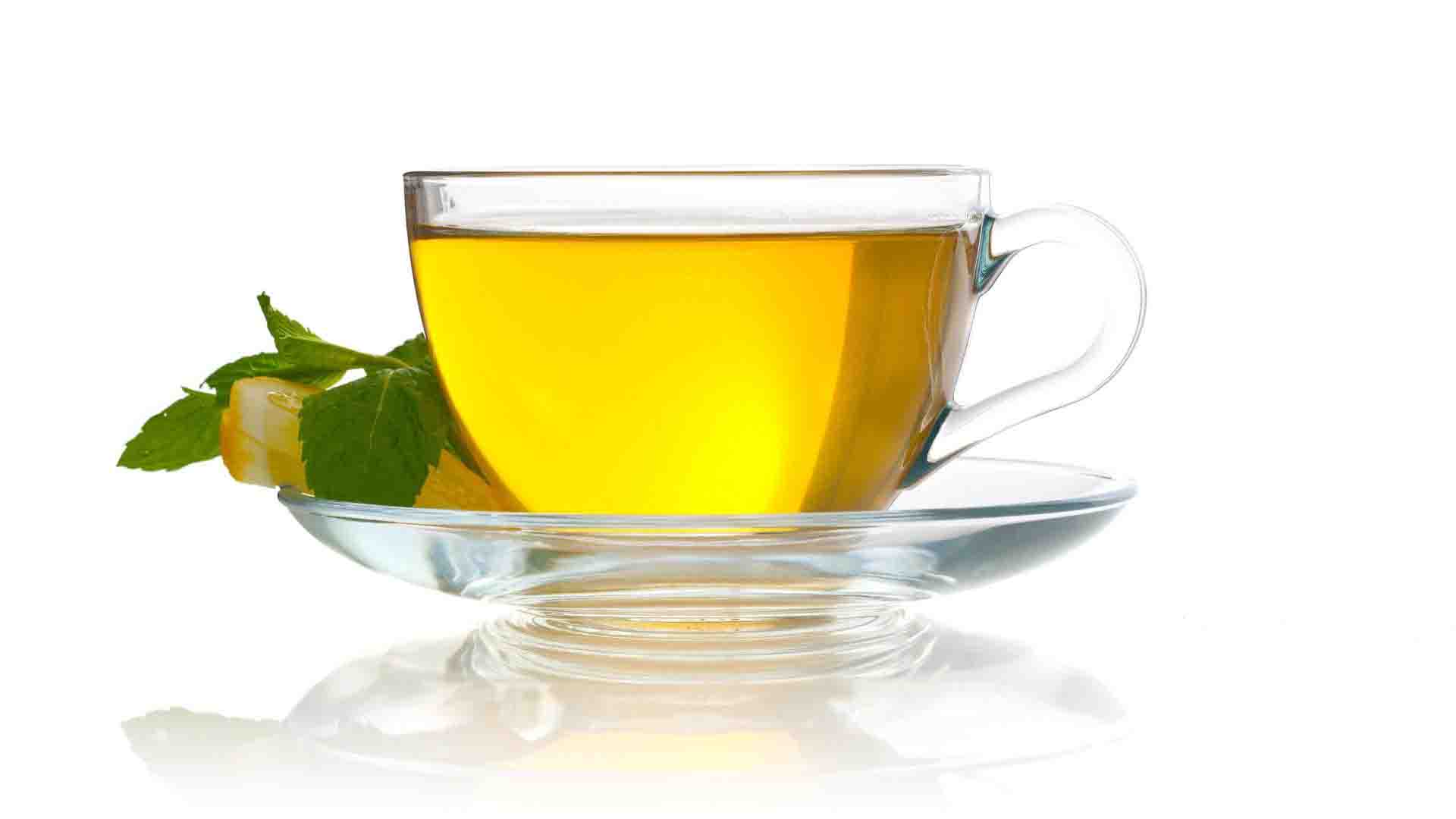
Yellow Tea: Benefits and Uses
Yellow tea is similar to green tea but undergoes a unique processing step. This technique gives it a slightly different taste and color. It’s a rare type of tea, primarily produced in China, and revered for its subtle flavors and rarity.
With a mild flavor, yellow tea offers a refreshing taste that’s less astringent than green tea. It shares similar health benefits, such as rich antioxidant content and digestive support.
Some benefits of yellow tea include:
- Rich in antioxidants
- Promotes digestive health
Despite its rarity, yellow tea is appreciated for its gentle sweetness and health properties. Its delicate nature makes it a special treat for tea aficionados worldwide.
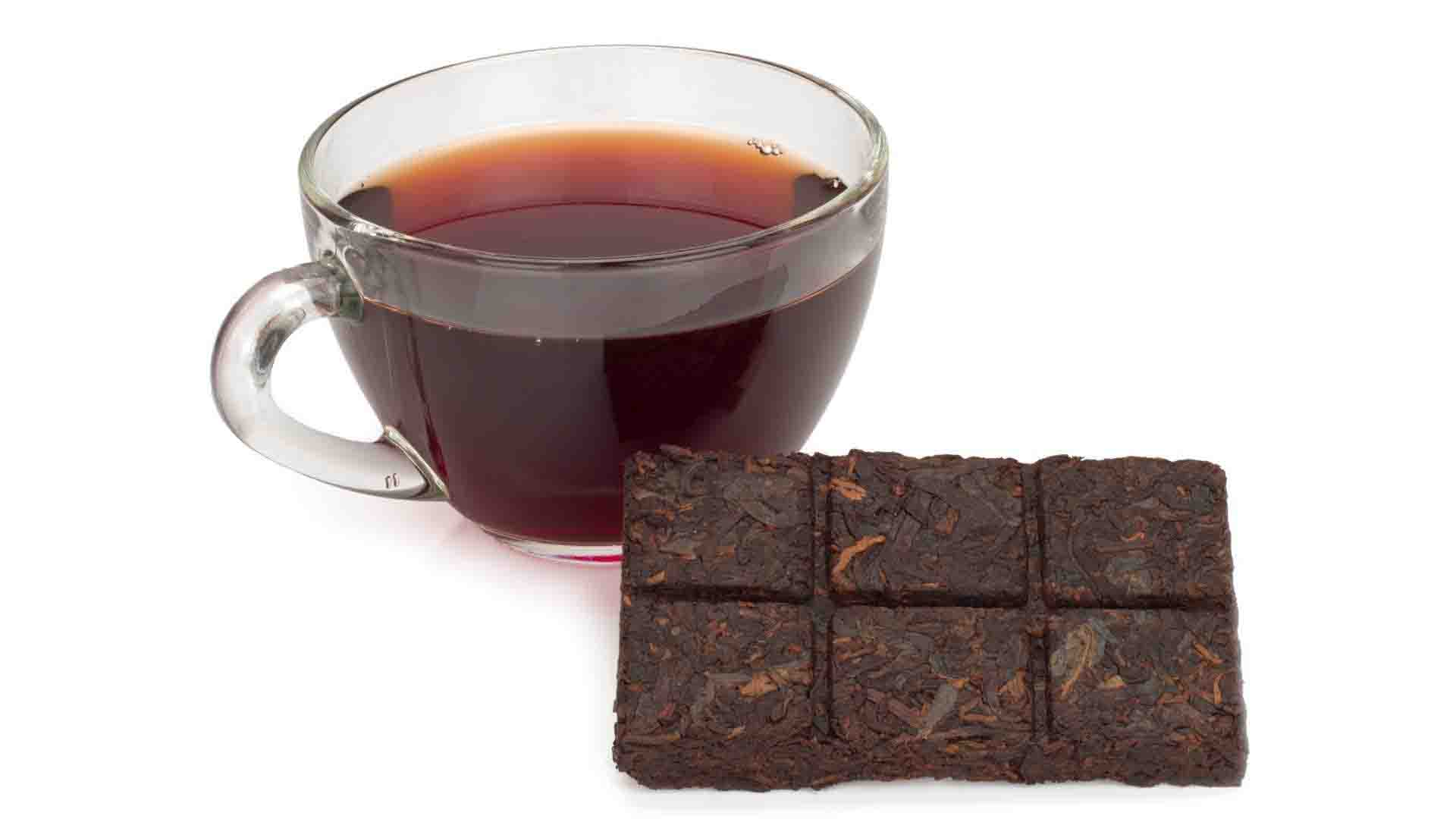
Pu-erh Tea (Dark Tea): Benefits and Uses
Pu-erh tea, also known as dark tea, undergoes a fermentation process, enhancing its rich flavor. Originating from Yunnan, China, it’s known for its earthy, robust taste and health benefits. Fermentation results in unique microbial profiles that aid digestion.
Pu-erh may help with weight loss, by increasing metabolism and reducing fat absorption. It’s also linked to reduced cholesterol levels and improved cardiovascular health. Its unique taste and aged varieties make it a collector’s favorite.
The benefits of pu-erh tea include:
- Aids digestion
- Promotes weight loss
- Reduces cholesterol
Aging pu-erh tea can intensify its flavor, much like fine wine. This fermentation provides a unique tea experience, balancing bold taste with health-enhancing properties.
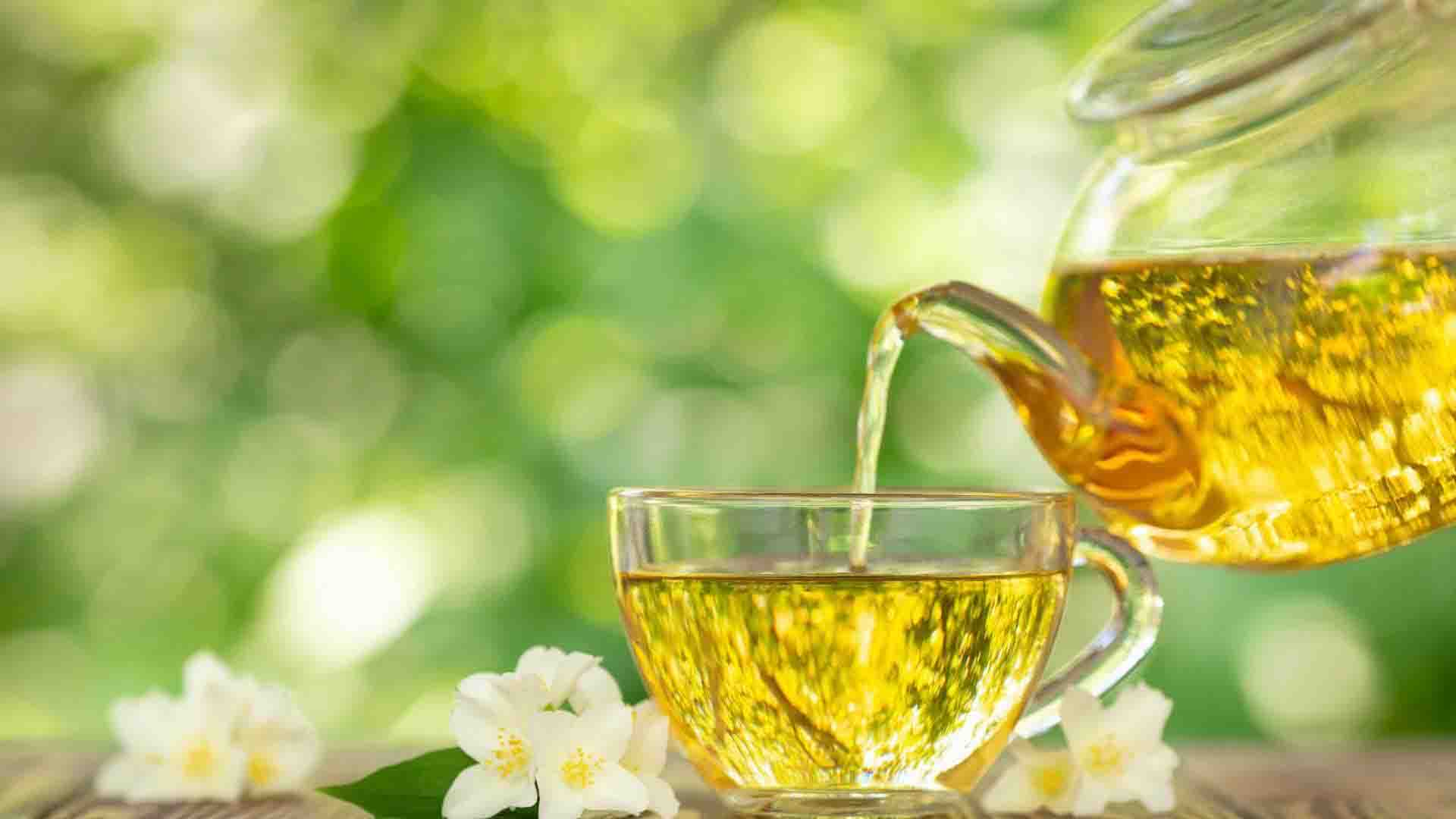
Herbal Teas: Benefits and Popular Varieties
Herbal teas, often called tisanes, are caffeine-free infusions made from herbs, spices, and flowers. Unlike traditional teas, they don’t come from the Camellia sinensis plant. Herbal teas offer diverse flavors and health benefits, fitting well into a balanced lifestyle.
Popular herbal teas include chamomile, peppermint, and hibiscus. Each has unique properties that contribute to well-being. Chamomile is renowned for its calming effects, aiding in relaxation and sleep improvement. Peppermint can soothe digestive issues, refreshing the palate while promoting digestion.
Hibiscus tea stands out for its vibrant color and potential cardiovascular benefits. It can help lower blood pressure and support a healthy heart. Rich in vitamin C and antioxidants, hibiscus provides a natural immune boost.
Here are some benefits of popular herbal teas:
- Chamomile: Promotes relaxation and better sleep
- Peppermint: Supports digestion and freshens breath
- Hibiscus: Lowers blood pressure and boosts immunity
These tisanes add a flavorful dimension to your tea routine. Whether you seek relaxation or digestive aid, herbal teas provide versatile options for enhancing daily wellness.
Unlike the true teas above, herbal teas (tisanes) are made from herbs, flowers, spices, or fruit — not from the tea plant. Well-known herbal infusions include chamomile, peppermint, ginger, hibiscus, etc. These are naturally caffeine-free and often brewed for specific health effects. Some highlights:
- Chamomile tea: Chamomile flowers yield a gentle, floral tea famous for relaxation. It contains flavonoids (plant antioxidants) with mild anti-inflammatory and calming effects. Studies suggest chamomile tea may reduce anxiety and improve sleep quality. Chamomile has even been linked to a lower risk of heart disease and may relieve menstrual discomfort.
- Ginger tea: Made from fresh or dried ginger root, this spicy infusion contains gingerol, a potent antioxidant and anti-inflammatory compound. Ginger tea is a natural remedy for nausea and upset stomach. It can improve digestion by speeding gastric emptying and soothing the digestive tract. Ginger’s anti-inflammatory properties also boost immunity.
- Hibiscus tea: Brewed from dried hibiscus flowers, hibiscus tea is bright red and tart. It’s rich in anthocyanins (antioxidants) that have antiviral effects and support cardiovascular health. Clinical studies show hibiscus tea can help lower blood pressure and reduce LDL cholesterol, making it heart-friendly.
- Other herbal blends: Peppermint tea is commonly used to ease indigestion and bloating. Tulsi (holy basil) tea is prized in Ayurveda for stress relief. Rooibos (red bush) is high in antioxidants and naturally sweet. Each herbal tea has unique properties – for example, peppermint and fennel soothe the gut, while peppermint and lavender teas can relax the nervous system.
In general, herbal teas aid digestion and relaxation. Many cultures use them as natural remedies: chamomile or lavender tea before bedtime promotes sleep, ginger or peppermint tea after meals eases indigestion, and mint or lemongrass tea can reduce bloating. Remember, herbal teas vary widely, so it’s best to choose one for the benefit you seek. Always check if a herb interacts with medications or allergies (for example, chamomile can trigger pollen allergies in some people).
Why Tea Is Healthy: Antioxidants and More
Across these tea types, the common thread is antioxidants. All true teas (black, green, white) share polyphenols that combat oxidative stress. These compounds can strengthen the immune system and protect against chronic diseases. Compounds like L-theanine promote relaxation without drowsiness, and modest caffeine provides a gentle energy lift. The result is a drink that can help reduce inflammation, improve cardiovascular health, aid digestion, and even boost mood.
The traditional practice of drinking multiple tea types also adds variety to your diet. For example, in Bangladesh, many enjoy a strong spiced masala chai (black tea with spices) for warmth and flavor, and later a soothing chamomile or green tea for relaxation. Mixing it up lets you enjoy each type’s special benefits throughout the day.
Other Notable Teas and Infusions
In addition to traditional and herbal varieties, several unique teas and infusions capture interest for their taste and potential benefits. These less conventional options offer exciting flavours and diverse health advantages for those eager to explore further. Among these are matcha, rooibos, and the energising infusions of yerba mate and guayusa. Each offers distinct qualities that attract tea enthusiasts and health seekers alike. Incorporating these teas into your routine can enhance your tea-drinking experience, broadening your palate and providing functional health support.
Highlighted notable teas and infusions include:
- Matcha: A concentrated green tea with robust flavour and antioxidants
- Rooibos: A caffeine-free red tea high in antioxidants
- Yerba Mate & Guayusa: Popular South American infusions with energising effects
Matcha
Matcha is a form of green tea made from finely ground tea leaves. Its vibrant green colour and rich taste are unmistakable, distinguishing it from other teas. By consuming the whole leaf, you receive more nutrients and caffeine, boosting energy levels and alertness.
This tea, famous for its high antioxidant content, supports metabolism and overall health. Its beneficial compounds, like catechins, help in managing weight and reducing inflammation.
Key Matcha Benefits:
- Enhances energy and mental clarity
- Provides high levels of antioxidants
- Supports metabolism and weight management
Rooibos
Rooibos, known as red tea, offers a unique, sweet flavor profile. It originates from South Africa and is caffeine-free, making it a perfect alternative for evening consumption. Its rich antioxidant content benefits heart health and reduces inflammation, supporting a healthy lifestyle.
Besides its delightful taste, rooibos may alleviate allergy symptoms and aid digestion. The tea contains polyphenols that help protect against harmful oxidative stress.
Rooibos Benefits:
- Caffeine-free and full of antioxidants
- Promotes heart health and reduces inflammation
- Helps relieve allergy symptoms
Yerba Mate & Guayusa
Yerba mate and guayusa are energizing infusions popular in South America. Known for their stimulating effects, these teas offer a gentle caffeine boost without the jitters common with coffee.
They contain antioxidants and polyphenols, which help enhance mental focus and boost metabolism. Their savory, earthy flavors provide a refreshing and invigorating tea experience.
Benefits of Yerba Mate & Guayusa:
- Provides a smooth caffeine boost
- Enhances mental clarity and focus
- Contains antioxidants for health support
These unique teas and infusions provide a flavorful journey into diverse tea cultures, enriching your wellness journey.
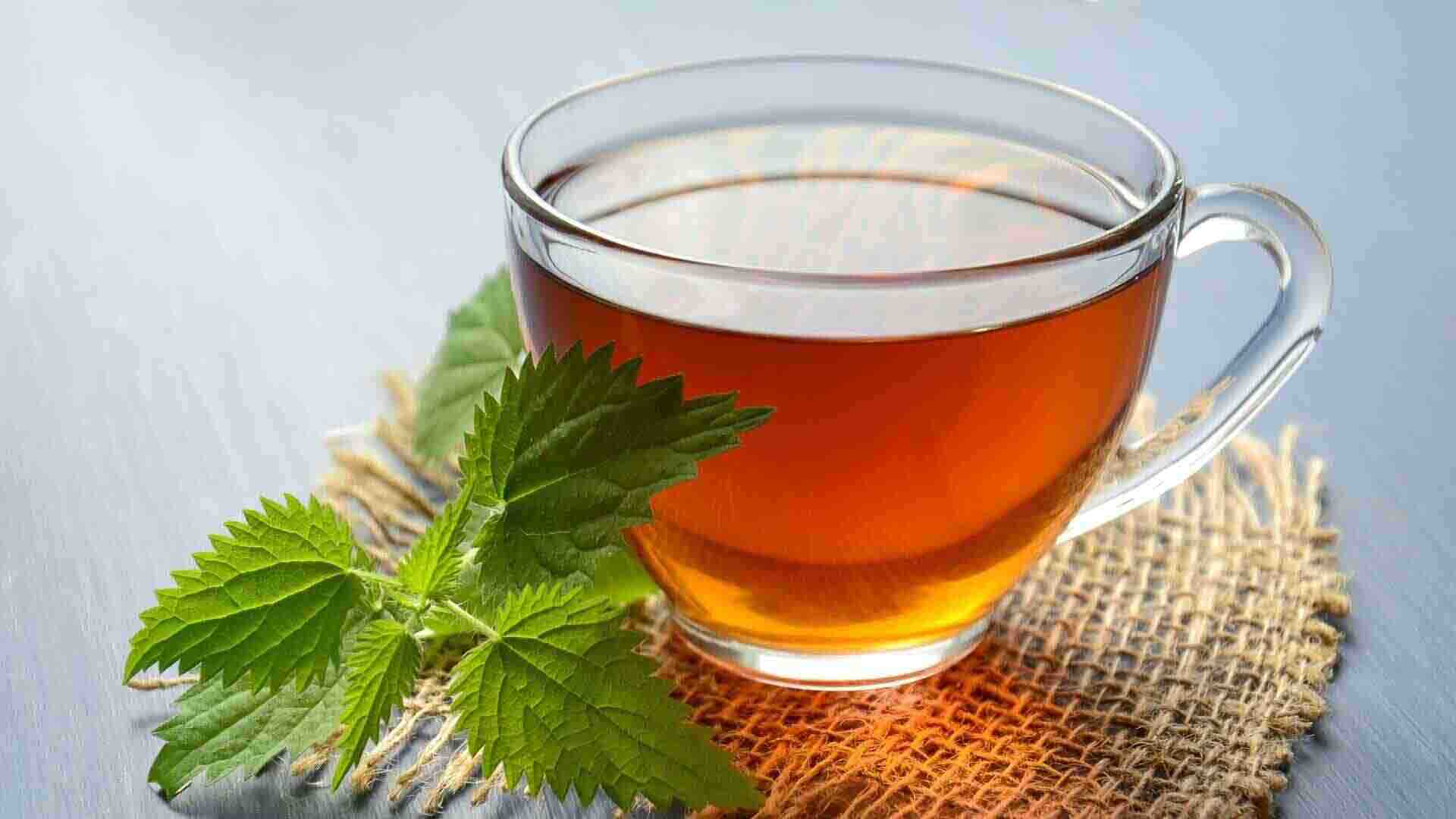
Comparing Caffeine Content in Different Types of Tea
Understanding caffeine levels in various teas can help you choose the best type for your needs. Tea offers a range of caffeine content, depending on the type and preparation method. Some people prefer a strong caffeine kick, while others seek a milder effect or caffeine-free options.
Typically, black tea contains the highest caffeine amount, ideal for an energizing start to your day. In contrast, herbal teas like rooibos are naturally caffeine-free, perfect for evening relaxation.
Typical Caffeine Content:
- Black Tea: High (40-70 mg)
- Green Tea: Moderate (20-45 mg)
- White Tea: Low (15-30 mg)
- Oolong Tea: Medium (30-50 mg)
- Herbal Teas/Rooibos: None
How to Brew and Enjoy Tea for Maximum Health Benefits
Brewing tea to maximize its health benefits requires attention to detail. Each type of tea has an ideal brewing temperature and time. Adjusting these factors can enhance both flavor and health benefits.
For green and white teas, use cooler water to preserve delicate flavors and nutrients. Black and oolong teas usually require higher temperatures to extract their rich compounds fully.
Brewing Tips:
- Green/White Tea: 160-185°F for 2-3 minutes
- Black/Oolong Tea: 200-212°F for 3-5 minutes
- Herbal Tea: 210°F for 5-7 minutes
Experiment with steeping times to suit your taste. Enjoy your tea without added sugar or milk to retain its natural health benefits.
Tea lovers have a world of flavors and health perks to explore. Each variety brings unique antioxidants and benefits, from bold black tea to delicate white tea. There’s a tea, whether you’re seeking heart-healthy antioxidants, digestive relief, or a calming cup before bed. STB Leaf is dedicated to bringing you high-quality teas from Bangladesh. Experience the benefits yourself – visit our online shop to browse premium black, green, white, and herbal teas, or contact us to learn more. Enjoy your cup of health today!
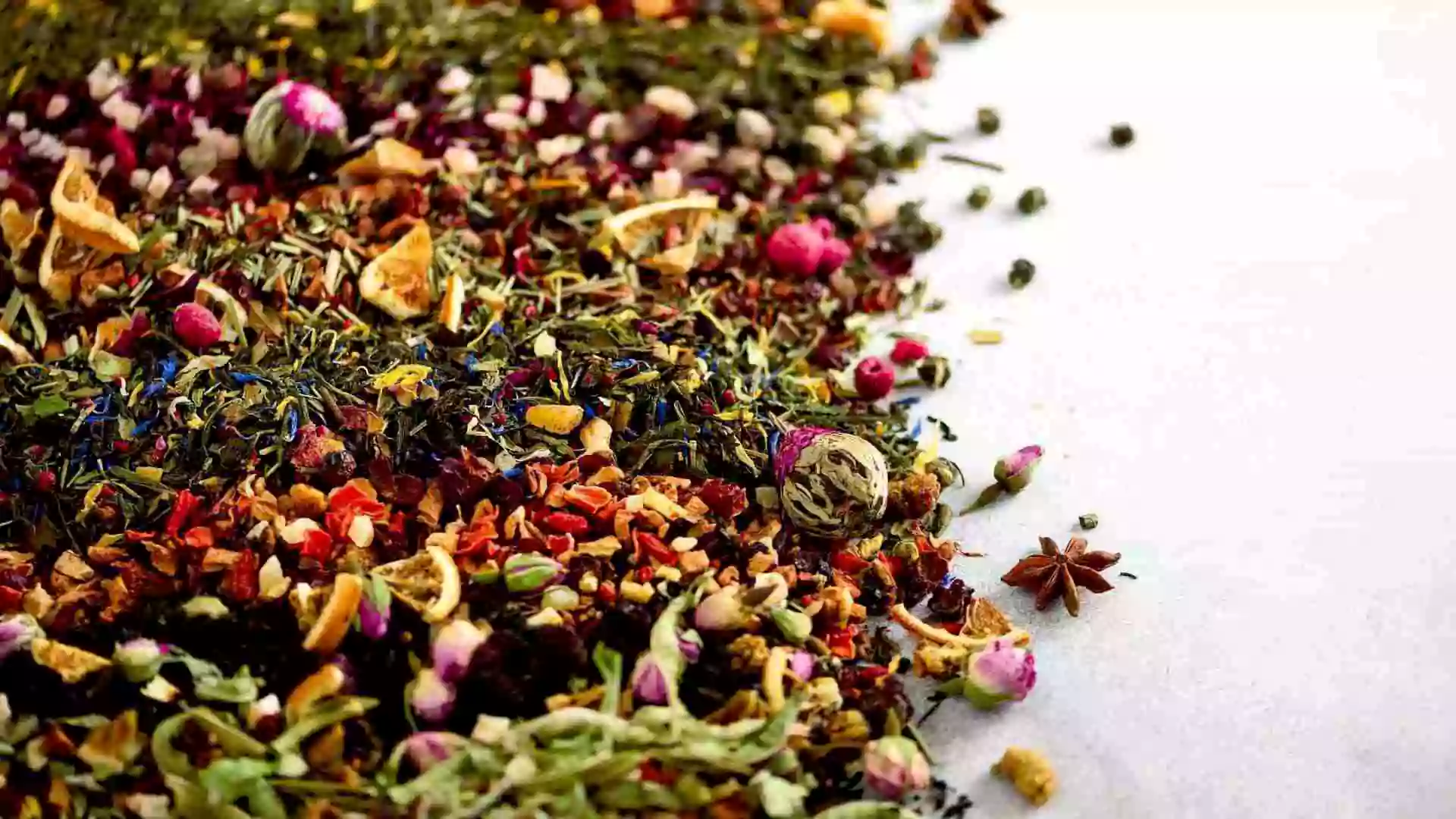
Frequently Asked Questions About Tea
Many wonder about the health benefits of different teas. Tea’s antioxidants help protect against various chronic diseases. Drinking tea regularly can improve mental alertness due to its caffeine content.
How much tea should you drink daily? While it varies based on individual preference, 3-5 cups is often recommended. This amount can provide significant health benefits without overconsuming caffeine.
Q: What are the main types of tea?
Traditional teas come from the Camellia sinensis plant, including black, green, white, and oolong tea. These differ by how the leaves are processed. Black tea is fully oxidized, green tea is unoxidized, and white tea is minimally processed. Herbal teas (tisanes) like chamomile or peppermint are not true teas—they’re infusions of herbs or flowers.
Q: How is black tea different from green tea?
The key difference is processing: black tea leaves are fully oxidized (giving a dark color and rich flavor), whereas green tea leaves are quickly heated to prevent oxidation. This means black tea and green tea have different antioxidant profiles. Black tea’s theaflavins offer certain benefits, while green tea’s catechins (like EGCG) offer others.
Q: What are the health benefits of black tea?
Black tea is rich in polyphenol antioxidants. It has been shown to improve heart health by lowering “bad” cholesterol and blood pressure. Drinking black tea may reduce stroke risk and can help improve focus thanks to its moderate caffeine and L-theanine. It also contains antioxidants that support a healthy immune system.
Q: What are the health benefits of green tea?
Green tea’s catechins fight inflammation and protect cells. Green tea can lower LDL cholesterol and blood pressure, reducing heart disease and stroke risk. It also supports brain health (helping memory and concentration). Green tea is often used in weight management, as its compounds may boost metabolism slightly. It can also help regulate blood sugar for people with prediabetes or diabetes.
Q: Are there health benefits to drinking white tea?
Yes. White tea is one of the richest sources of antioxidants because it’s the least processed. These antioxidants help reduce inflammation. White tea has been linked to heart benefits (relaxing blood vessels, preventing cholesterol oxidation). It may also support dental health due to its fluoride and catechins, and some evidence suggests it can aid metabolism and fat burning. White tea offers similar health benefits to green tea, with a milder taste.
Q: What are the benefits of herbal teas?
Herbal teas each have unique benefits depending on the herb. For example, chamomile tea is well known for its calming, sleep-promoting effects (it contains flavonoids that reduce anxiety). Ginger tea (made from ginger root) is famous for soothing upset stomachs and nausea because of gingerol. Hibiscus tea is high in antioxidants and has been shown to help lower blood pressure and cholesterol. Peppermint tea can relax the digestive tract, easing indigestion. Generally, herbal teas promote relaxation, aid digestion, and provide vitamins and antioxidants without caffeine.
Q: Which tea has the most antioxidants?
White tea typically has the highest concentration of antioxidants, followed closely by green tea. However, black tea, oolong, and herbal teas like rooibos contain beneficial antioxidants. The differences are subtle: all true teas provide healthful polyphenols, so drinking any of them regularly is a win for your health.
Q: Can tea help with digestion?
Yes. Certain teas are used to soothe the digestive system. For example, ginger tea can calm nausea and improve gut motility. Peppermint and chamomile teas are also known to relieve indigestion and bloating. Even a simple cup of warm black or green tea after a meal can aid digestion by stimulating stomach secretions. Adding lemon or honey may also help (consume in moderation if you watch sugar intake).
Q: Does tea help me relax or sleep?
Many people find herbal teas beneficial for relaxation. Chamomile tea is a classic bedtime beverage that can reduce anxiety and promote sleep. Other calming herbs include lavender and lemon balm. Green and black tea contain L-theanine, which creates a calm alertness, but they also have caffeine, so they’re less sedating. Caffeine-free herbal teas (chamomile, valerian, holy basil) are best for a truly relaxing cup.
Q: How much tea should I drink daily for health benefits?
Research suggests moderate tea intake is best. Generally, 2–3 cups of tea daily provide significant antioxidants and health effects. Cleveland Clinic notes that about three cups daily seems to be the “magic number” for antioxidant benefits. Drinking more than this (especially of caffeinated tea) may lead to sleep disturbance or digestive upset. Remember to drink tea plain or with minimal additives to get the full health benefit.
Q: Are there any side effects or risks of drinking tea?
For most people, tea is safe and healthy. However, because tea contains caffeine, excessive intake can cause insomnia, jitteriness, or raise heart rate in sensitive individuals. Pregnant women are advised to moderate their tea (and caffeine) consumption. People prone to kidney stones should be cautious with too much black tea, which is high in oxalates. Also, very hot tea can increase esophageal cancer risk, so let it cool to a warm temperature. Lastly, some herbs can interact with medications (for example, chamomile with blood thinners). In summary, enjoy tea in moderation to maximize benefits and minimize risks.
Choosing the Right Tea for You
Tea plays a central role in Bangladesh’s culture and daily life. In Bangladesh, for example, “tea is a symbol of hospitality” and families often start their day with a hot cup of cha. Tea isn’t just one drink – it comes in many varieties, each processed differently and offering unique flavors. All true teas (black, green, white, oolong) come from the Camellia sinensis plant, but processing methods vary.
Black tea is fully oxidized, green tea is unoxidized, and white tea is made from young leaves and buds. Herbal “teas” (tisanes) are not from the tea plant but infusions of herbs, flowers, or spices. Despite these differences, most teas share one thing in common: they’re loaded with antioxidants. Tea’s health boost comes primarily from polyphenols – plant compounds that fight free radicals and inflammation.
Finding the perfect tea for you involves exploring different flavors and benefits. Each type offers unique health advantages. Consider your health goals and taste preferences when selecting tea. Whether you seek energy or relaxation, there’s a tea for you. Experiment with various types to discover new favorites. Enjoy the process of trying each distinct variety.
Guidelines for Choosing Tea:
- Identify your health priorities.
- Taste various options to find your preference.
- Consider caffeine levels.
- Align tea choice with personal wellness goals.
Tea is a delightful journey towards better health and enjoyment.

